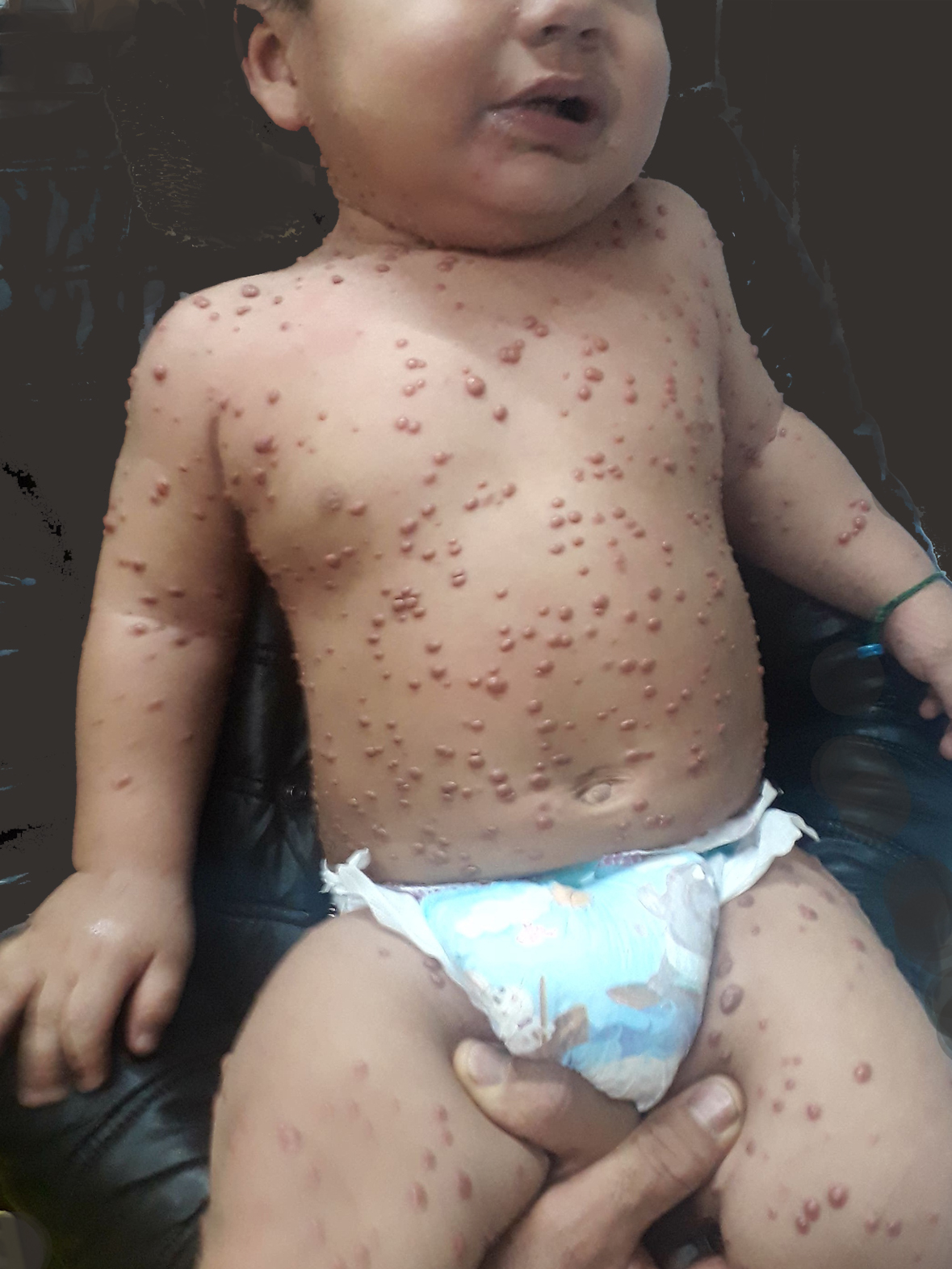Juvenile xanthogranuloma mimicking molluscum contagiosum: a case report and literature review.

Downloads
DOI:
https://doi.org/10.26326/2281-9649.29.1.1942How to Cite
Abstract
Juvenile xanthogranuloma (JXG) is an unusual non-Langerhans cell histiocytosis usually presenting in childhood and infancy. JXG is the most common form of non-Langerhans cell histiocytosis (non-LCH). It is usually localized on the head, neck, trunk and extremities.
A 9-month-old boy presented with multiple yellowish umbilicated papules and nodules on the face, trunk and extremities. The first lesion was a yellow papule on the face at 6-months of age; then the lesions spread to other areas. On skin examination, there were multiple, dome-shaped yellow colored firm nodules with diameter of about 0.5-1 cm over the face, trunk, upper and lower limbs. Initially, the patient was treated according to the diagnosis of molluscum contagiosum; however, he was not responsive. The histological evaluation confirmed the diagnosis of juvenile xanthogranuloma.
We recommend skin biopsy when encountering umbilicated lesions with doubtful clinical diagnosis. Moreover, JXG should be kept in mind as a differential diagnosis of umbilicated lesions.
